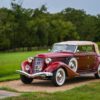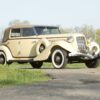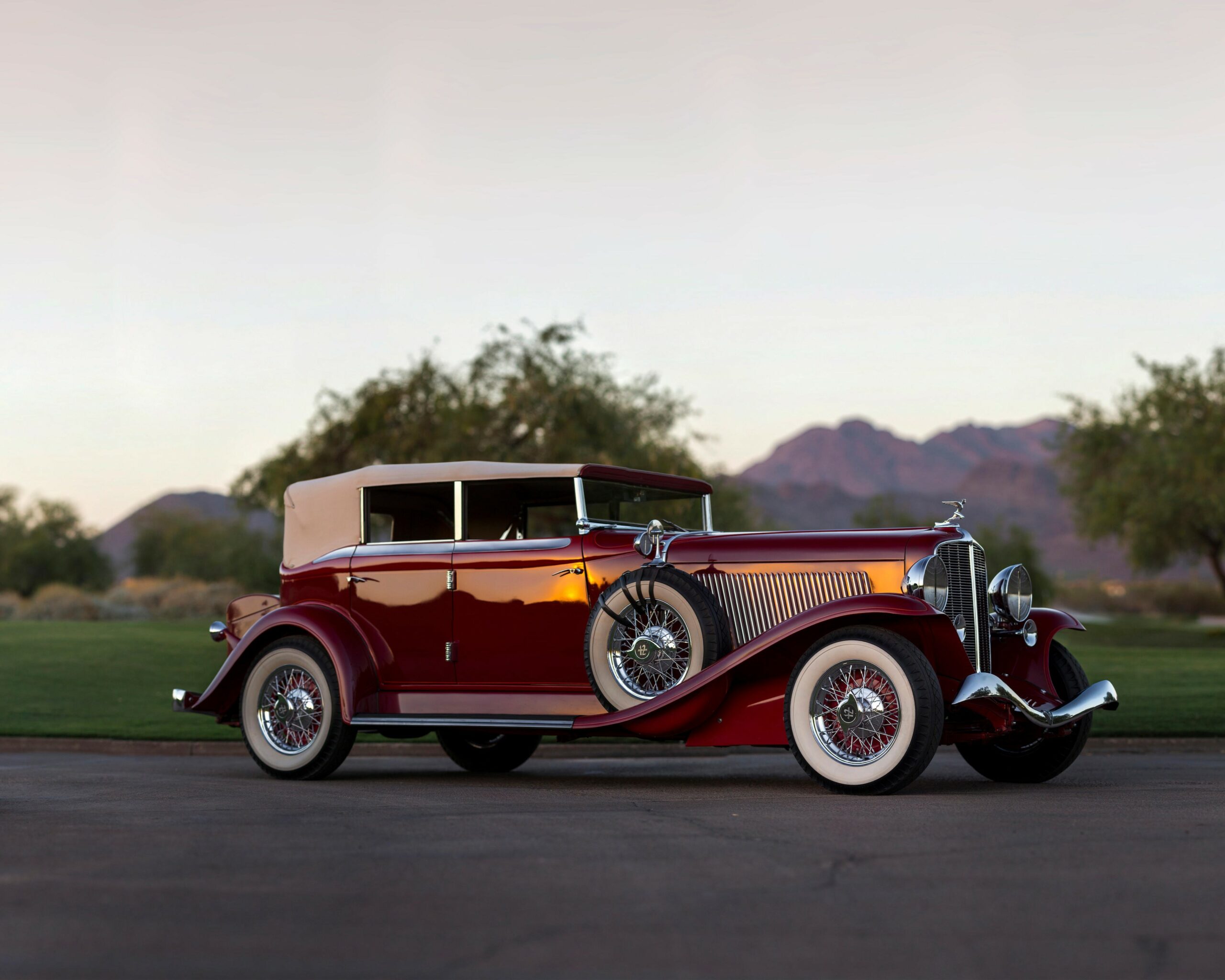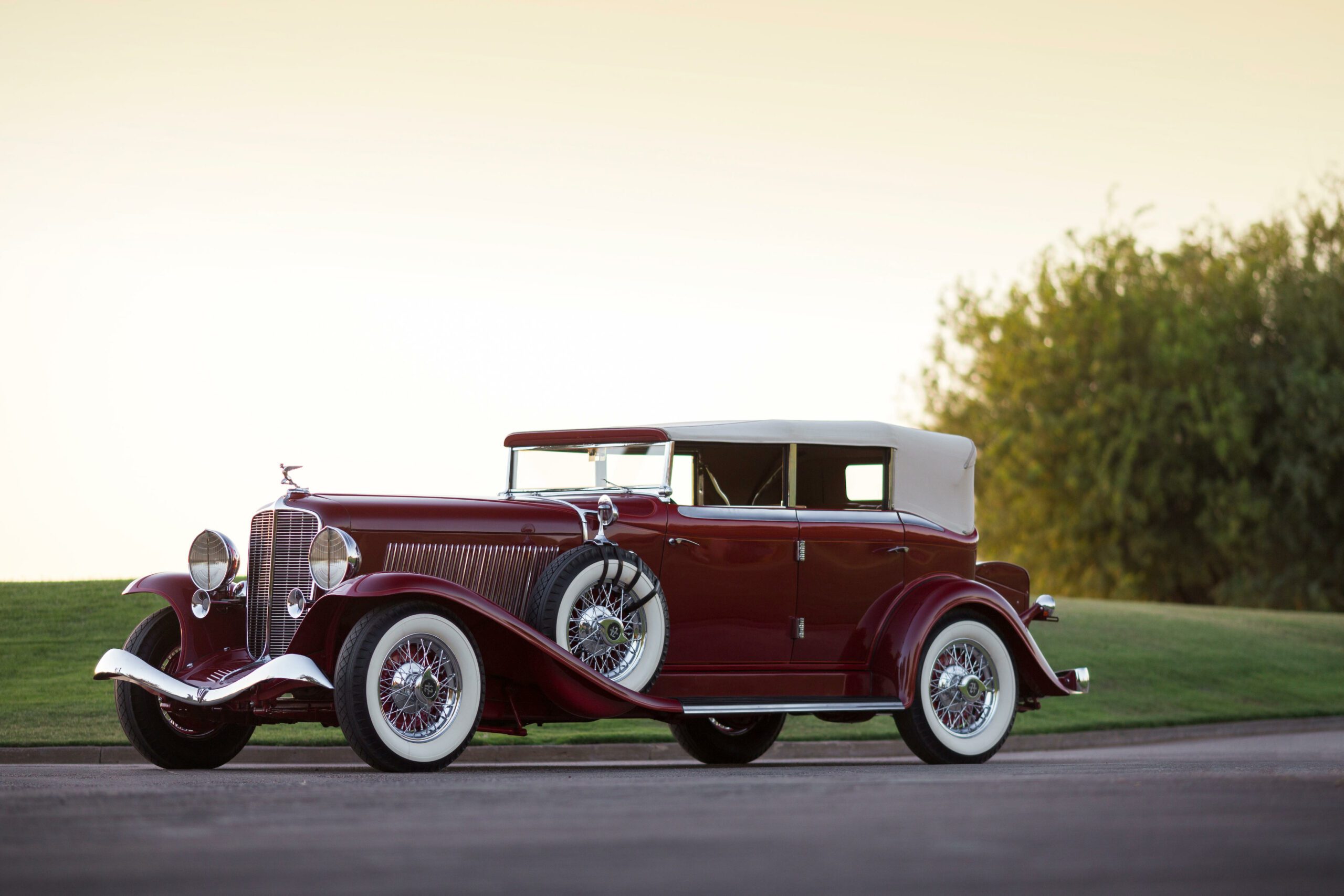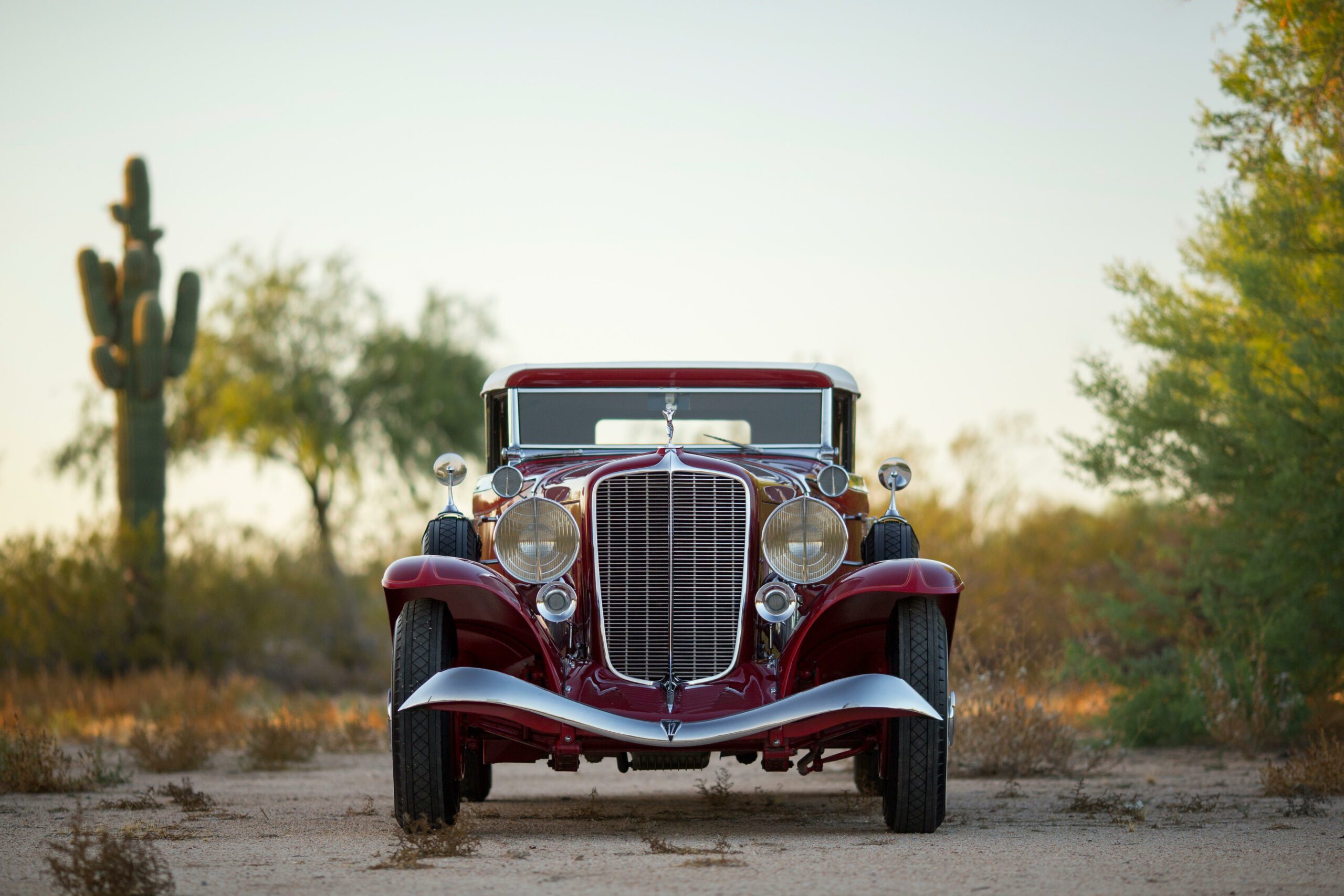Auburn cars originated from the efforts of the Eckhart brothers in Auburn, Indiana, creating their first prototype in 1900, though official production started in 1903. Auburns with various engines emerged until the brothers sold the company in 1919.
In 1925, Cord oversaw the integration of Lycoming straight-eight engines into existing six-cylinder chassis, alongside a restyling effort, resulting in a sales doubling for three consecutive years, leading Cord to become president in 1926. In late 1931, the company introduced the groundbreaking 12-160 V-12 model, offering impressive performance at a more accessible price.
The 12-160 impressed with its contemporary features, powered by a 6,407cc V-12 engine producing 160bhp. Noteworthy was its “Dual Ratio” free-wheel differential. Succeeded in 1933 by variants like the 12-161 and 12-165, Auburns epitomized luxury.
Alan Leamy’s designs, inspired by Cord and Duesenberg, adorned Auburns with sophistication. The Phaeton Sedan, reminiscent of Murphy & Co.’s elegance, featured chromed pillars, squared glass, a mesh grille, and a convertible top, accented by thick-chromed trim, enhancing its allure.
Source: Bonhams


